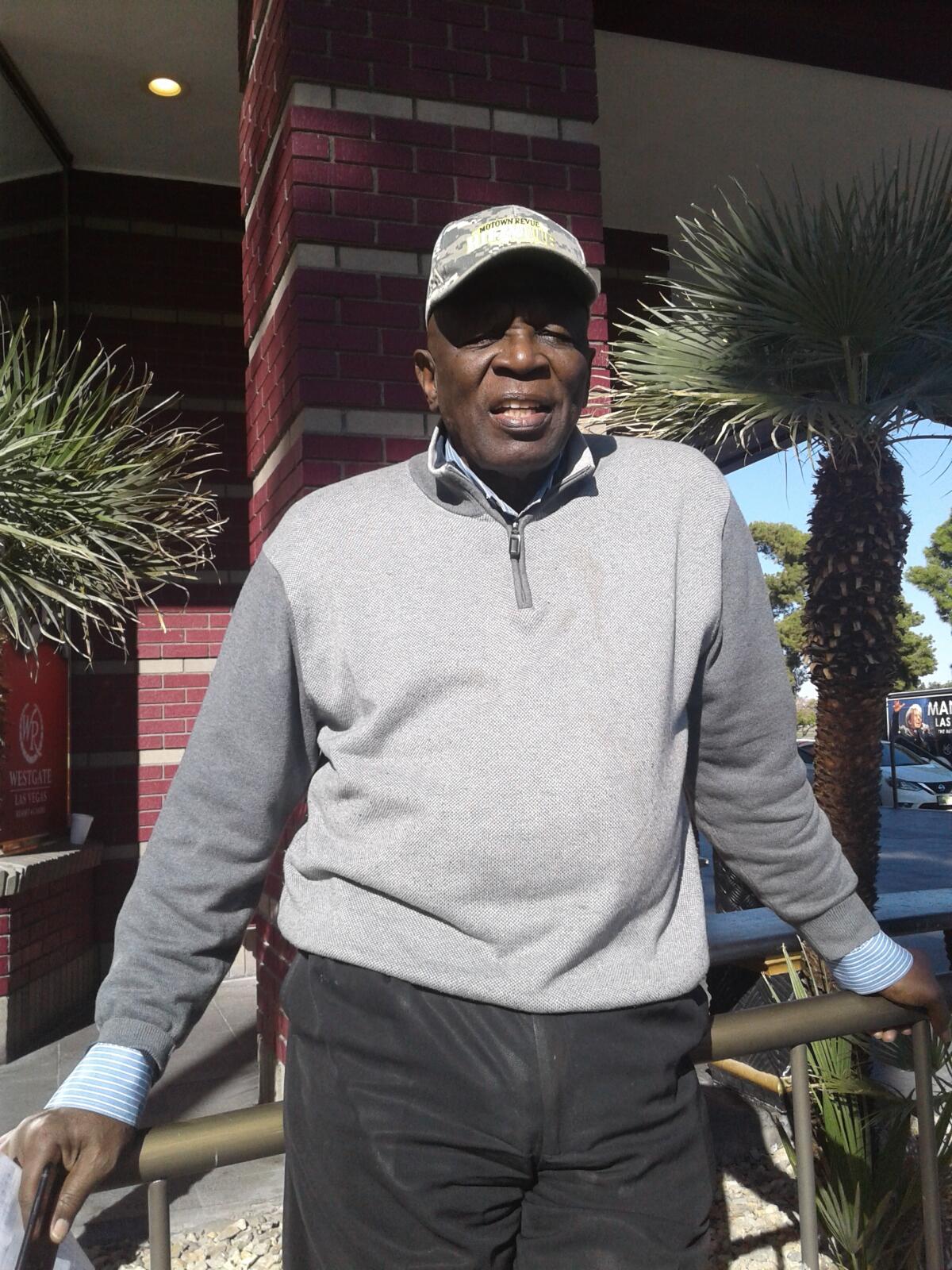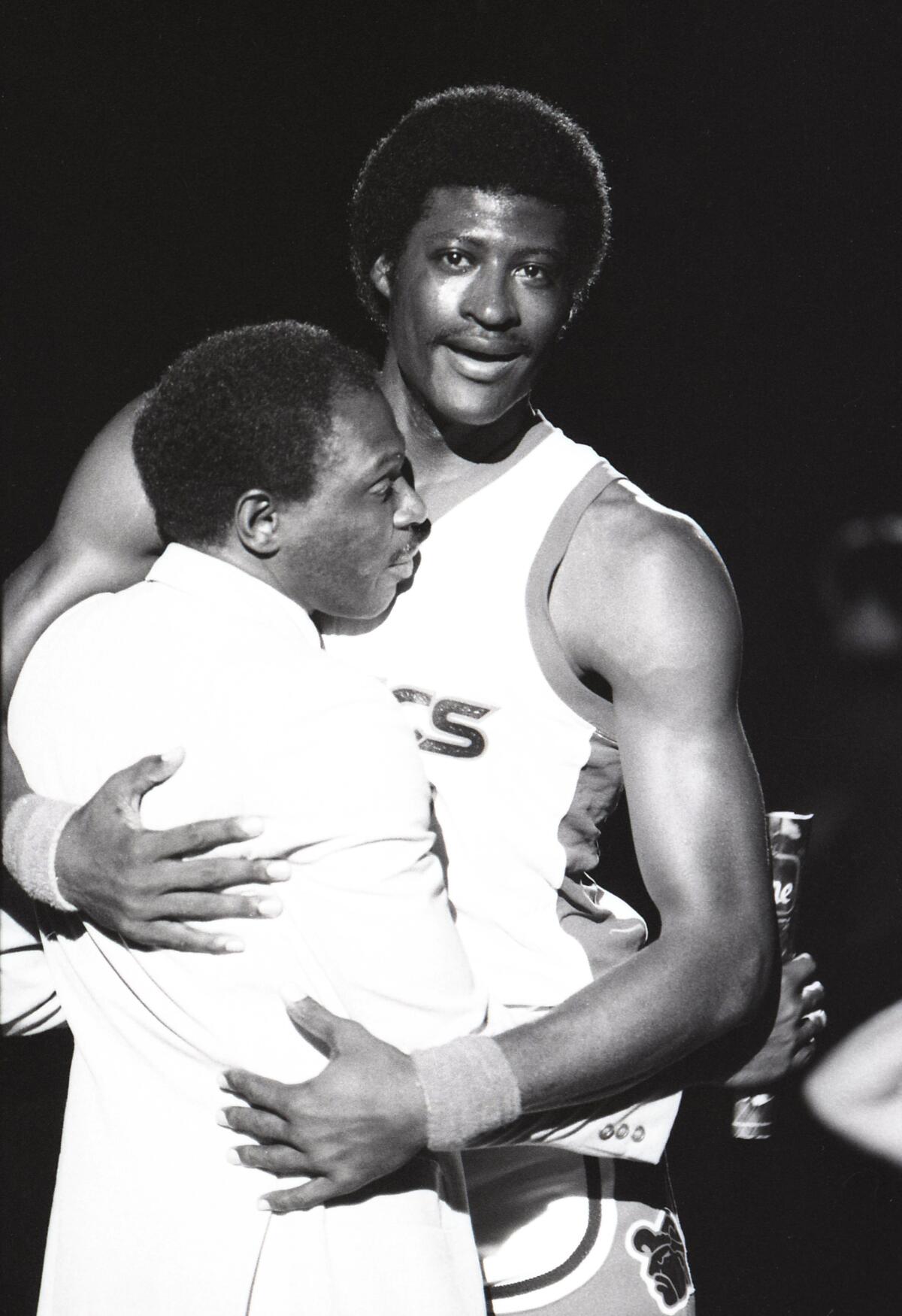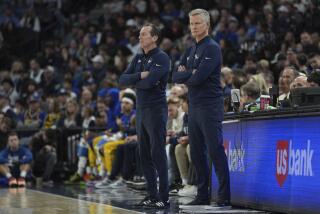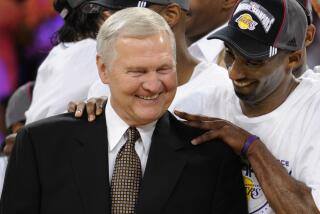Smokey Gaines, first Black Division I basketball coach in California, dies

Smokey Gaines, the first Black head coach of an NCAA Division I basketball program in California at San Diego State, has died.
Former San Diego State basketball coach David “Smokey” Gaines has died.
His family announced his death Saturday morning, reportedly from complications with liver and brain cancer. Gaines suffered a stroke in June 2018. Most Internet databases listed him at 78 years old, but his family’s Facebook post said he was 80.
He is remembered in San Diego as head coach of the Aztecs from 1979 to 1987 and the first Black coach of an NCAA Division I program in California. But he was more than that: a Harlem Globetrotter, a pro basketball player, an NBA scout, an athletic director, a nightclub owner, a comedian, a promoter, a single-digit handicap golfer, even a furniture salesman.
“He relates to people,” ESPN announcer Dick Vitale, who hired Gaines as an assistant coach at the University of Detroit Mercy in the 1970s, told the Union-Tribune two years ago. “People really enjoy his company. A loyal, dedicated guy. Just a good friend, a friend for life.”
Gaines was promoted to head coach after Vitale left Detroit in 1977 and amassed a 47-10 record in two seasons before heading west to a SDSU program trying to raise the profile of an athletic department that had elevated to Div. I only nine years earlier.
The Aztecs went 6-21 in his first season, then had five straight winning seasons culminating in a 23-8 record and a trip to the NCAA Tournament in 1984-85 when Gaines was the Western Athletic Conference coach of the year. The Aztecs wouldn’t reach the Big Dance again until Steve Fisher took them in 2002.
Known for his tailored suits, silk ties and one-liners, Gaines was equal parts tactician, salesman and showman. He immediately sensed SDSU athletics had an image problem and set out to change that with numerous community appearances. He called it “the nation’s fastest-rising basketball program.” He talked about his belief in higher education … “you know, 6-8, 6-9, 6-10.”
Told at his introductory news conference that he’d be mayor if he won 10 games, he quipped: “Let me be governor, I’ll win 12.”
“If I’d come here and been very serious and sat in my office here and didn’t speak,” Gaines told the San Diego Reader in 1983, “then (SDSU) would have had just another program. But with me being a colorful coach, or however you might want to put it, I think that helped this program a lot. You can’t buy the kind of recognition we gained by that.”
The starting point guard for his first three seasons was a baseball player named Tony Gwynn, who still ranks as the school’s career assist leader. His biggest recruit, though, was Michael Cage, a 6-foot-9 power forward from West Memphis High in Arkansas who picked the Aztecs over the likes of Kentucky, Louisville and Memphis and became a first team all-American.

But Gaines was limited by facilities (his office was a cramped trailer next to Peterson Gym) and resources (the program’s $300,000 budget was couch change compared to college basketball’s blue bloods). On the wall he had a preliminary rendering of what would become Viejas Arena a decade later; it remained a dream while Gaines was coach after students rejected a referendum for a fee increase to fund it.
In an interview with freelance journalist Rob Miech in 2018 for a story in the Union-Tribune, Gaines predicted he would have won three NCAA titles with Viejas Arena.
“If I had that (building), Woooo,” he said. “I came so close to getting big-time ball players. I woulda gotten them if we had the facilities.”
Gaines wound up with a 112-117 record in eight seasons as Aztecs coach.
Gaines grew up in inner-city Detroit, one of nine children predominantly raised by his mother, a housekeeper who, he once said, made $5 a day. He attended LeMoyne-Owen College in Memphis and left as its all-time leading scorer, and later became the first player to have his number retired.
He was a sixth-round draft pick by his hometown Detroit Pistons but opted to attend a tryout camp for the Harlem Globetrotters, with 117 players vying for four spots. He was selected and traveled to more than 60 countries over the next year. One of his roommates was famed Globetrotter Curly Neal.
He spent four years with the Globetrotters, and in 2006 he became the 24th person inducted into their “Legends Ring.”
He spent part of the next season with the Kentucky Colonels of the American Basketball Association, then the rival league of the NBA. Following that, he worked as a furniture salesman and got his master’s degree at Eastern Michigan University before returning to basketball as a high school coach.
Vitale hired him in 1973. Four years later, after Vitale left for the Pistons, Gaines became Detroit Mercy’s first Black head coach. In his second season, the Titans were ranked as high as No. 15 in the nation and reached the NCAA Tournament; they’ve been back only three times in the 40 years since.
“Smokey was a motivator, he just had his way of doing it and he got the most out of you,” former player Earl Cureton told The Detroit News. “We had one of our most successful seasons when he took over, but he just wasn’t a great coach, he was a great individual. He came from some hard times and made his way out.”
After SDSU, Gaines briefly coached the San Diego Stingrays in the International Basketball League, worked as a scout for the NBA’s Denver Nuggets and ran a Mission Valley nightclub called “Smokey’s.” He returned to LeMoyne-Owen as basketball coach and athletic director from 2005 to 2008, then spent four years as athletic director for Memphis City Schools before retiring. In recent years, he shuttled between Memphis and Las Vegas.
More to Read
Updates
5:36 p.m. Sept. 5, 2020: This story was updated to add comments from Michael Brunker and Steve Fisher.
Go beyond the scoreboard
Get the latest on L.A.'s teams in the daily Sports Report newsletter.
You may occasionally receive promotional content from the Los Angeles Times.











